当前位置:网站首页>Concepts of objects and classes
Concepts of objects and classes
2022-04-23 03:34:00 【Chen Yu】
Java Summary of knowledge points : You can enter from here if you want to see
1、 object-oriented programming
java The core idea is object-oriented (OOP Object-Oriented Programming). Object oriented is suitable for dealing with complex problems , Suitable for dealing with multi person cooperation . For a problem , The first is to classify the problems , Then think about the class alone , Finally, process oriented analysis is carried out for each class .
The essence of object-oriented programming is : Organize code as a class , Encapsulating data in the form of objects .
A program is seen as a collection of objects , The object is the smallest unit . A set of related objects form a complex system .
1.1 The concept of object
So what is an object ?
Anything in real life can be regarded as an object , We usually use the static part ( attribute ) And the dynamic part ( Behavior ), To understand things .
All things are objects , Entities and concepts in the problem domain can be abstracted as objects . In the field of school : Student 、 teacher 、 Course 、 Classes and so on are all objects .
- Objects are unique in a system
- Objects have properties and behaviors : Static part ( attribute ) And the dynamic part ( Behavior )
How do we describe a person in reality ? Usually through his height, fat and thin 、 Gender 、 Age and other attributes . In addition, it usually describes what he is currently doing : speak 、 running 、 Crying and other behaviors . Through these aspects, we can fully understand a person . - Object has state : After a certain behavior occurs, the value of the attribute may be changed .
- Objects are the concrete implementation of a class .
How do we describe a student who is studying in the computer A?
1、 First, we abstract the student entity as an object , Then consider the attributes and specific behaviors of students .
2、 attribute : Student number 、 full name 、 Age 、 Gender 、 Class, etc . Behavior : Study 、 game 、 Sports and so on
3、 Specific to this student through attributes A.
4、 Describe the students A Is learning .
Therefore, by analyzing the static part and dynamic part of students, we can determine a specific student object .
1.2 The concept of class
Class can actually be seen as a template , And the object is the entity created through this template . In reality, we print paper money , You need to make a template first ( class ), Then the paper money is quickly generated through the template ( object ).
So the essence of a class is the carrier that encapsulates the properties and behaviors of an object , An object is an instance of a class . A class is a general term for a series of objects with the same characteristics . The properties of the object are defined in the form of member variables in the class , And behavior is defined as specific methods .
2、 Classes and objects
2.1、 package
stay java In, we need to create different classes , Create objects based on classes to write programs , So when our program gets bigger and bigger , If you put all the classes together , The difficulty of management can be imagined , I think anyone who sees a lot of classes together will have a headache .
So in java Package is introduced in (package) The concept of . It is similar to a folder , Multiple namespaces can be provided .
Bag 3 The two functions are as follows :
- It is convenient for us to distinguish classes with the same name
- It is more convenient to manage and maintain classes
- It is more convenient to control the access rights of classes
The first line in the code is the package definition statement , By keyword package. The following import statement of follow-up package , Keyword is import

package Package name (com.*****); // first line , And only one
import Package name + Class name ; // stay package after , There can be multiple
2.2 、 class
class (Class) It is the carrier that encapsulates the properties and behaviors of objects , Is one for creating java Templates for objects , It abstracts the common features and behaviors of objects , Use member variables to represent the properties of things , Describe the behavior in a specific way , So as to form a class . adopt new Keyword instantiates a class , That is to create an object with such characteristics and behavior .
We define a student's class :
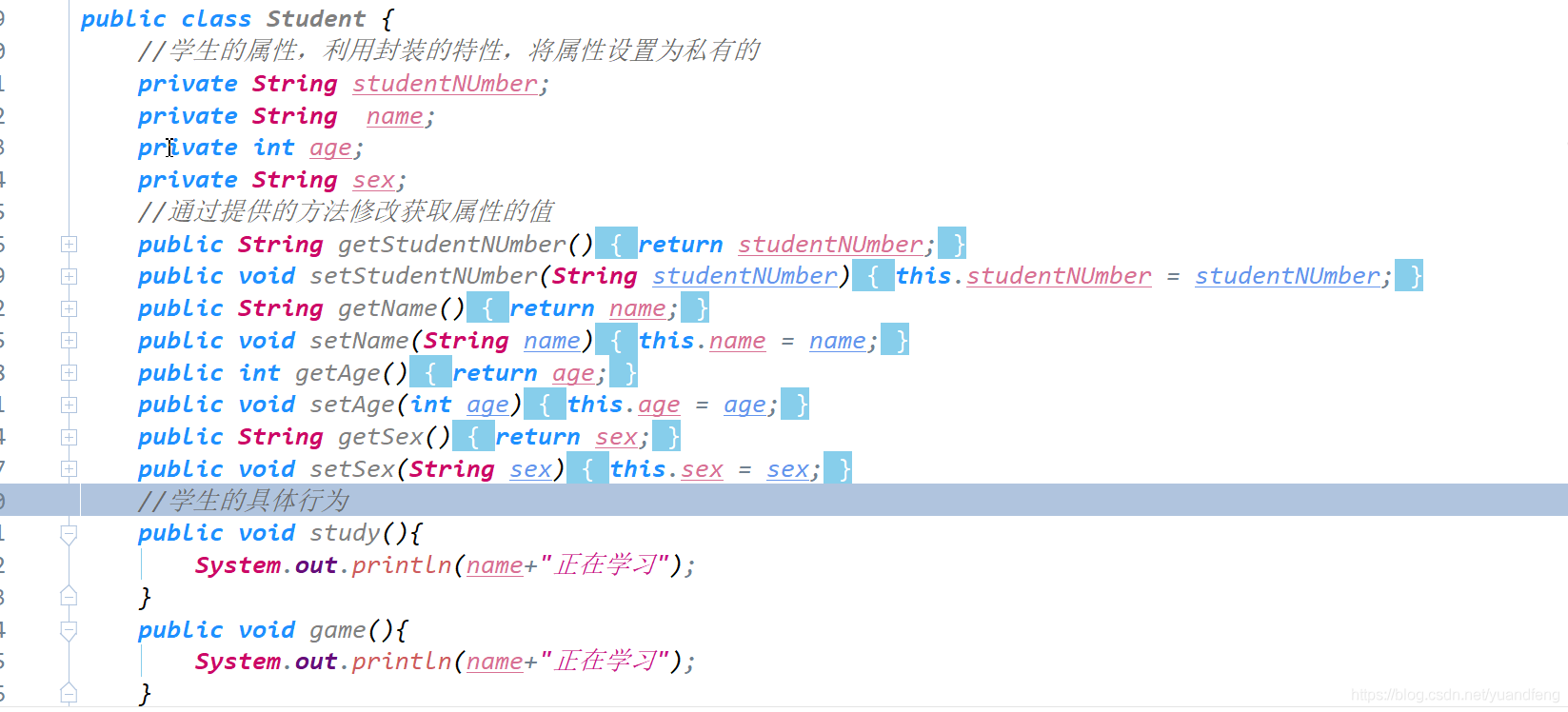
2.2.1 attribute
Java The properties of an object are member variables , Member variables can be set to various data types , The initial value can be assigned , You can also assign no value ( Have default values ). Usually, attributes use keywords private Set up , Expressed as private , Other classes are not visible , Provide some operation methods through .

2.2.2 Method
There are generally two methods : Construction methods and common methods .
1、 Construction method
Constructor( Constructors ) Is a special method in a class , Execute only once when the object is created , Some operations used for initialization , Class will have a parameterless constructor by default , You can also define , But once you define yourself , The default constructor will be overridden . The construction method can be overridden , The corresponding construction method will be selected according to different parameters passed .
- characteristic
- No return value , nothing void
- The name of the method is exactly the same as the name of the class
- effect
- It is mainly used to initialize properties
public class Student{
private String name;
// Construction method . No return value , The method name and type are the same
public Student(String name){
this.name = namel
}
// The construction method with parameters is defined , Also want to use a parameterless construct , You have to define it manually
public Student(){
}
}

2、 Common method
-
Method definition
// Common method Permission modifier return type Method name ( Parameter type Parameter name ......){ // No return value is void, If there is a return value, it is the corresponding data type Method body ; return Return value ; // When there is a return value , Use keywords return return } /** 1、 Modifier : It's optional , Tell the compiler how to call the method . Defines the access type of the method . 2、 return type : Method may return a value . Or there may be no return value . When there is a return value, it indicates the return value type , And use return return . Use when not in use void keyword 3、 Parameter type : Parameters passed to the method when the method is called , This parameter can be used in the method body . 4、 Method body : The method body contains specific statements , Define the function of the method . 5、 keyword return: Code execution to return End directly after , The subsequent code will not execute .return Followed by the corresponding return value */Methods pass parameters in addition to ordinary parameters , There is also a variable parameter :

-
Method call
- The type of parameters passed by the called method must be consistent with the parameters of the method
- Static methods : keyword static The method of decoration , When the class is loaded, it will produce
- Class name . Method name ();
- Non static methods : Only when the object is created
- Instantiate the object first : Class name Object name = new Class name ();
- Object name . Method name ();
// Create a class about people , Describe a person by attributes , People have their own specific behavior
package **; // Package of class
import **; // Import other classes
//class The keyword is represented as a class ,public For permissions ,Person For class name
public class Person(){
// attribute , What are the characteristics of a person . People have names 、 With age 、 There's sex
private String name; // full name
private int age; // Age
private String sex; // Gender
// Constructors , Each class has a default constructor , You can define , After definition, it defaults to custom
public Person(String name,int age,String sex){
this.name = name;
this.age = age;
this.sex = sex;
}
public Person(){
}
// Common method , People can talk
public void say(){
System.out.printf(" My name is %s, This year, %d year , Gender %s",name,age,sex);
}
}
2.2.4 Inner class


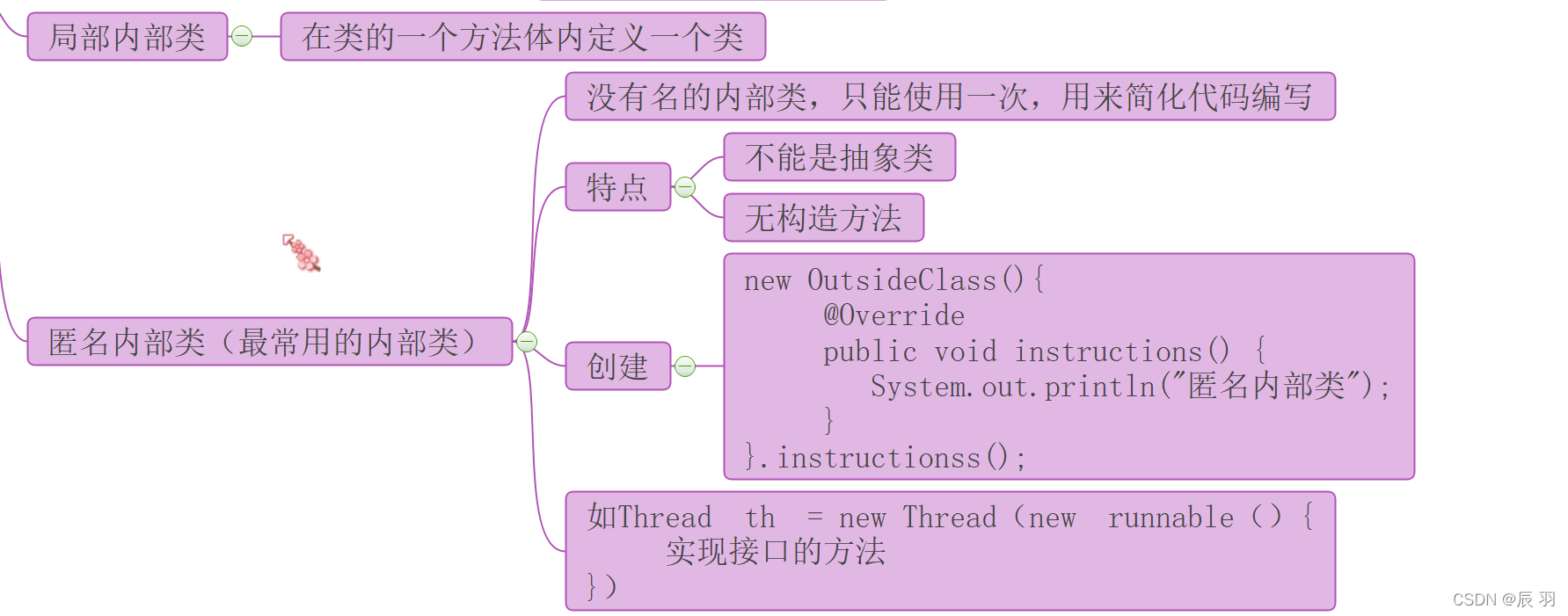

2.3、 object
2.3.1 Object creation
Steps to generate an object :
1、 Statement : Declare an object , That is, declare the type and name of the object .
2、 Instantiation : adopt new Keyword to create an object .
3、 initialization : When using new When you create an object , The constructor will be called to initialize the object .
Syntax for creating objects : Class name name = new Class name (); Create a student object Student student = new Student(); student It's actually a reference to an object , It doesn't save the object itself , It's the address of the object ( The data of the object is stored in heap memory , Stack memory is the address in heap memory ).
Different objects created by the same class are independent of each other , Allocate memory address when creating , When the object is no longer used , Object by Java Garbage collection and disposal mechanism of virtual machine .

2.3.2 Use of objects
-
Access properties : Property cannot be set to private
Object name . Property name = value ;
-
Calling method
Object name . Method name ( Parameters );
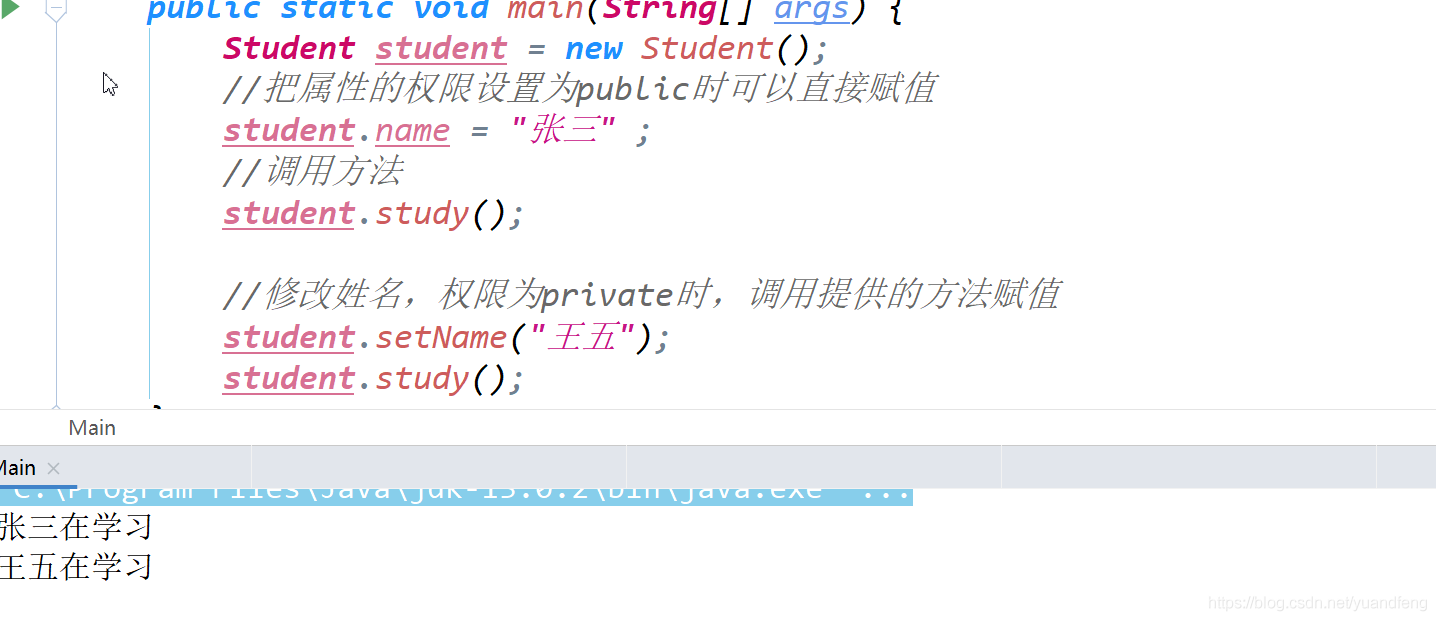
版权声明
本文为[Chen Yu]所创,转载请带上原文链接,感谢
https://yzsam.com/2022/04/202204230332246332.html
边栏推荐
- Punch in: 4.22 C language chapter - (1) first knowledge of C language - (11) pointer
- Three column layout (fixed width on both sides in the middle and fixed width on both sides in the middle)
- Oracle JDK vs OpenJDK
- Leetcode 617 merge binary tree
- Design and implementation of redis (5): master-slave replication strategy and optimization
- . NETCORE sets the API post mode, which can accept parameters directly in parentheses
- Use of rotary selector wheelpicker
- The art of concurrent programming (5): the use of reentrantlock
- Notes sur l'apprentissage profond (Ⅱ) - - Principe et mise en oeuvre de la fonction d'activation
- JS changes the words separated by dashes into camel style
猜你喜欢
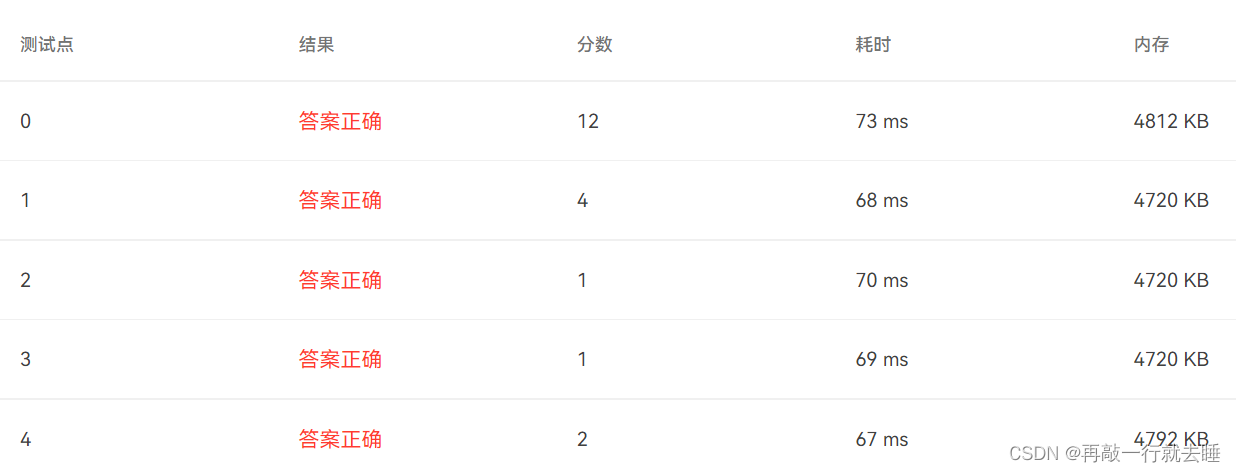
2022 group programming ladder simulation match 1-8 are prime numbers (20 points)
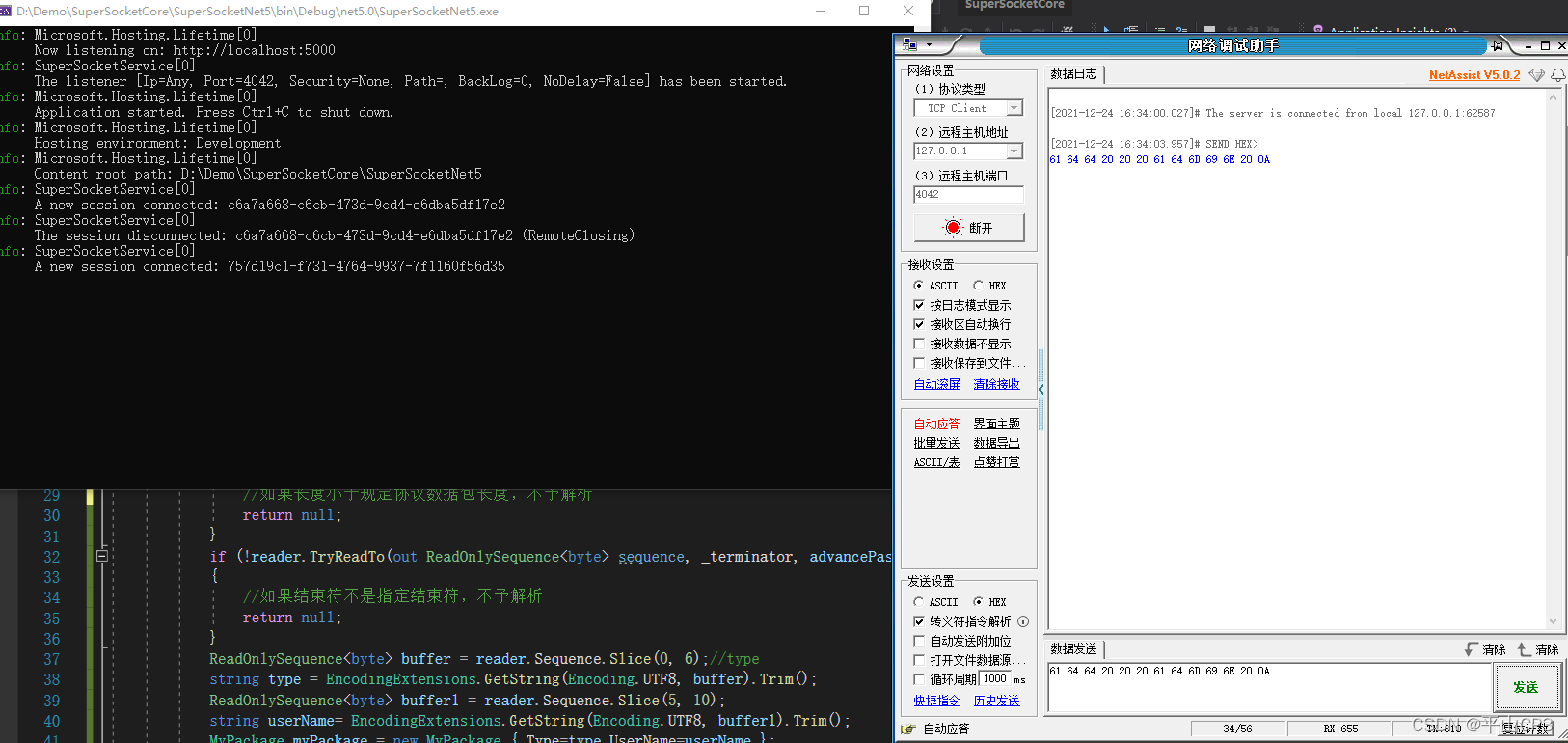
Supersocket is Use in net5 - startup

Problem a: face recognition
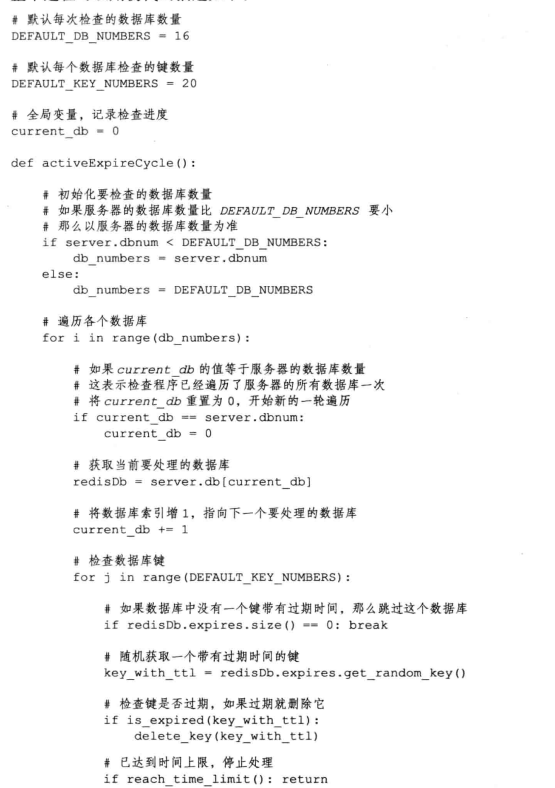
Design and implementation of redis (2): how to handle expired keys
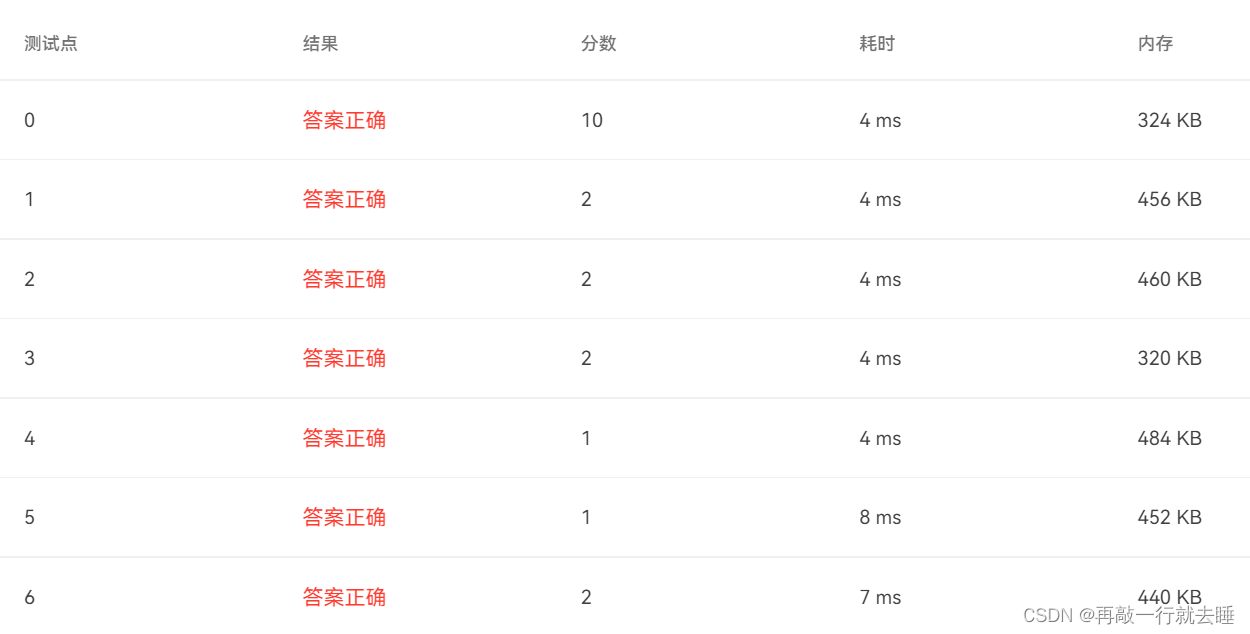
Translation of l1-7 matrix columns in 2022 group programming ladder Simulation Competition (20 points)

Redis (17) -- redis cache related problem solving

Development record of primary sensitive word detection

Design and implementation of redis (3): persistence strategy RDB, AOF

PyMOL usage
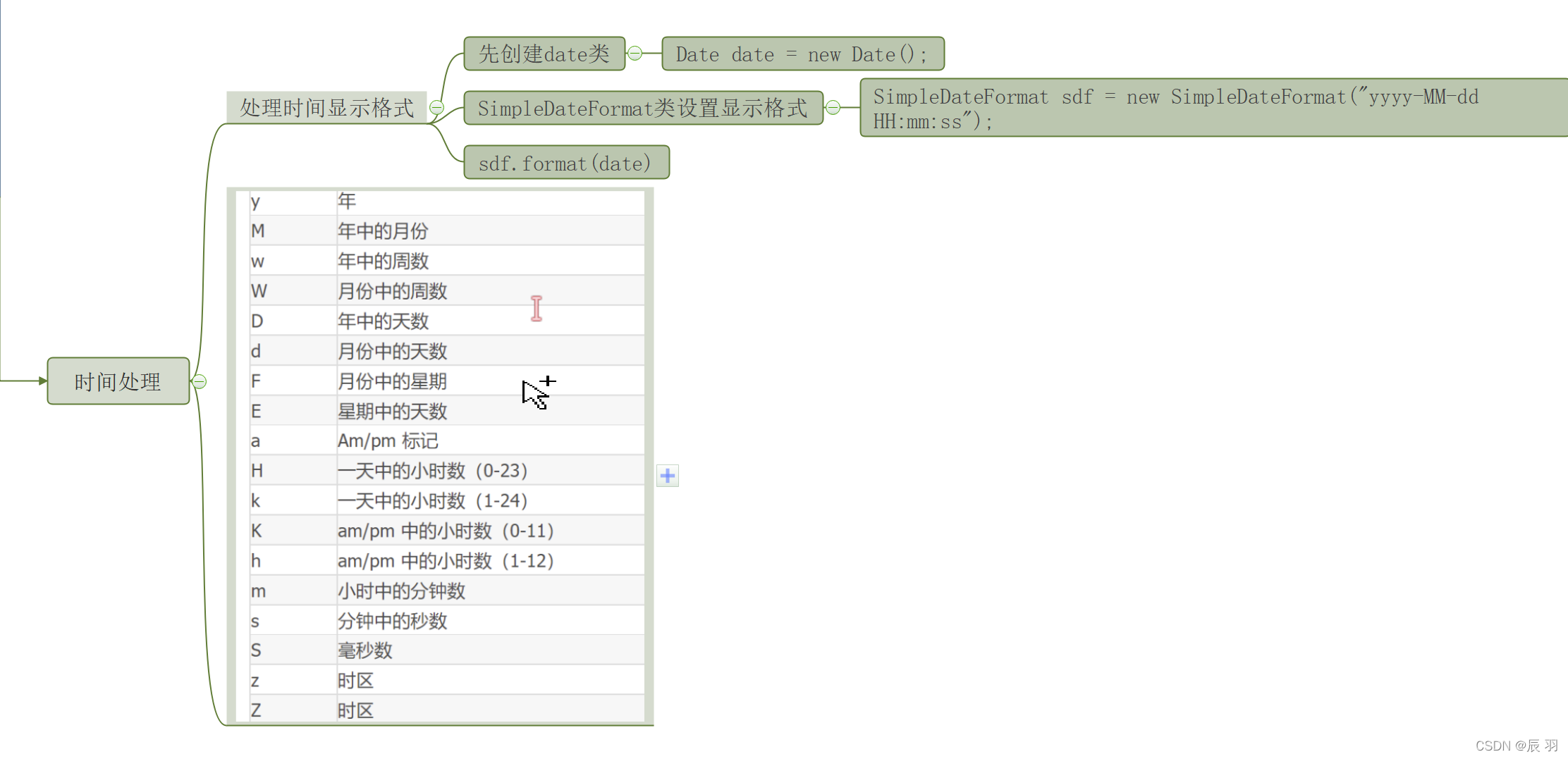
常用的辅助类
随机推荐
Use of rotary selector wheelpicker
QT learning summary
Problem C: Hanoi Tower III
MySQL query specifies that a row is sorted to the first row
Applet - more than two pieces of folding and expansion logic
C-10 program error correction (recursive function): number to character
L3-011 直捣黄龙 (30 分)
L3-011 direct attack Huanglong (30 points)
C-11 problem I: find balloon
批量下載文件----壓縮後再下載
Leetcode 617 merge binary tree
2022 group programming ladder game simulation L2-4 Zhezhi game (25 points)
Cefsharp stores cookies and reads cookies
MySQL keyword group_ Concat, combined connection query
Development record of primary sensitive word detection
第四次作业
深度学习笔记(二)——激活函数原理与实现
7-1 introduction to finance
On the principle of concurrent programming and the art of notify / Park
JS - accuracy issues